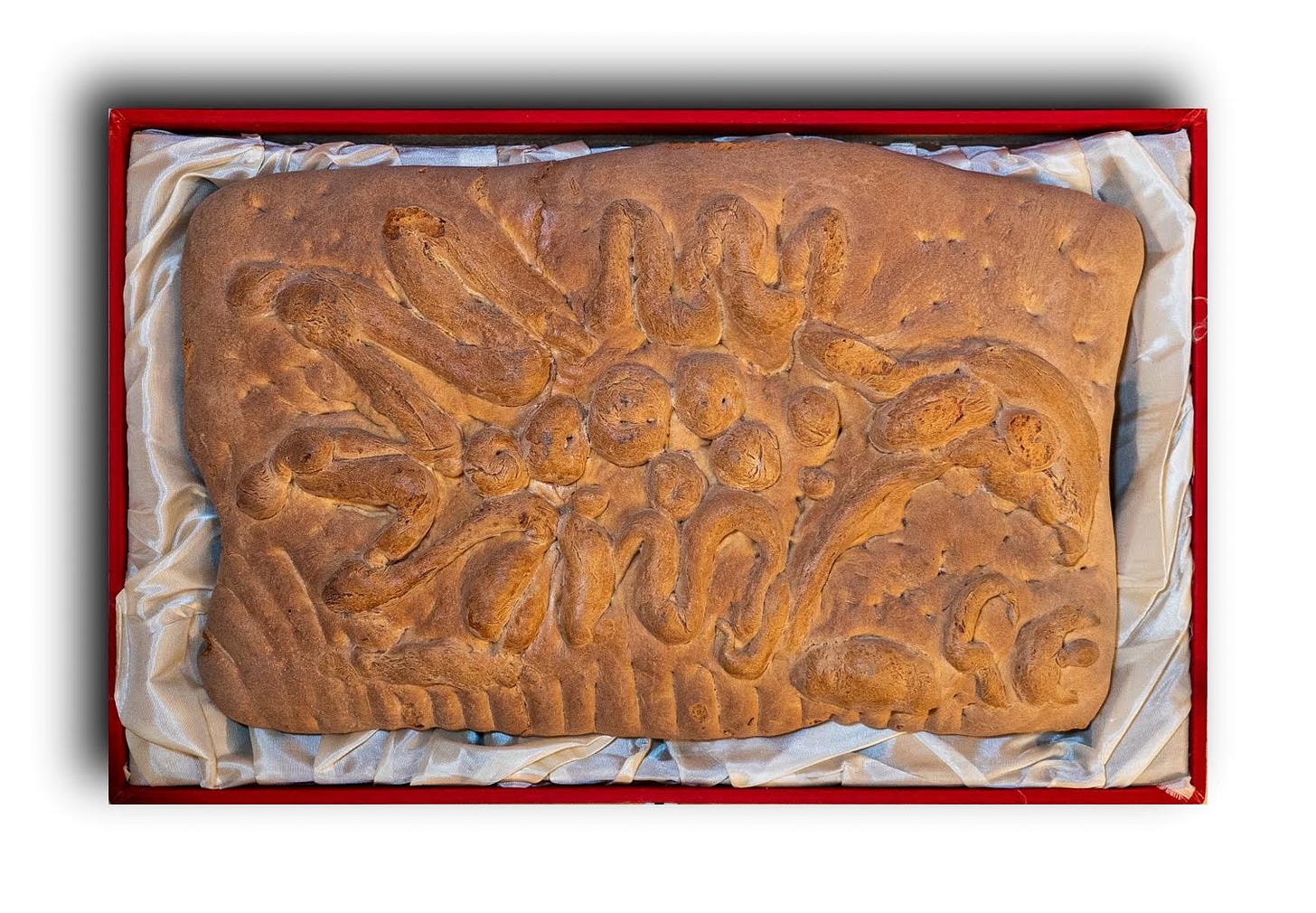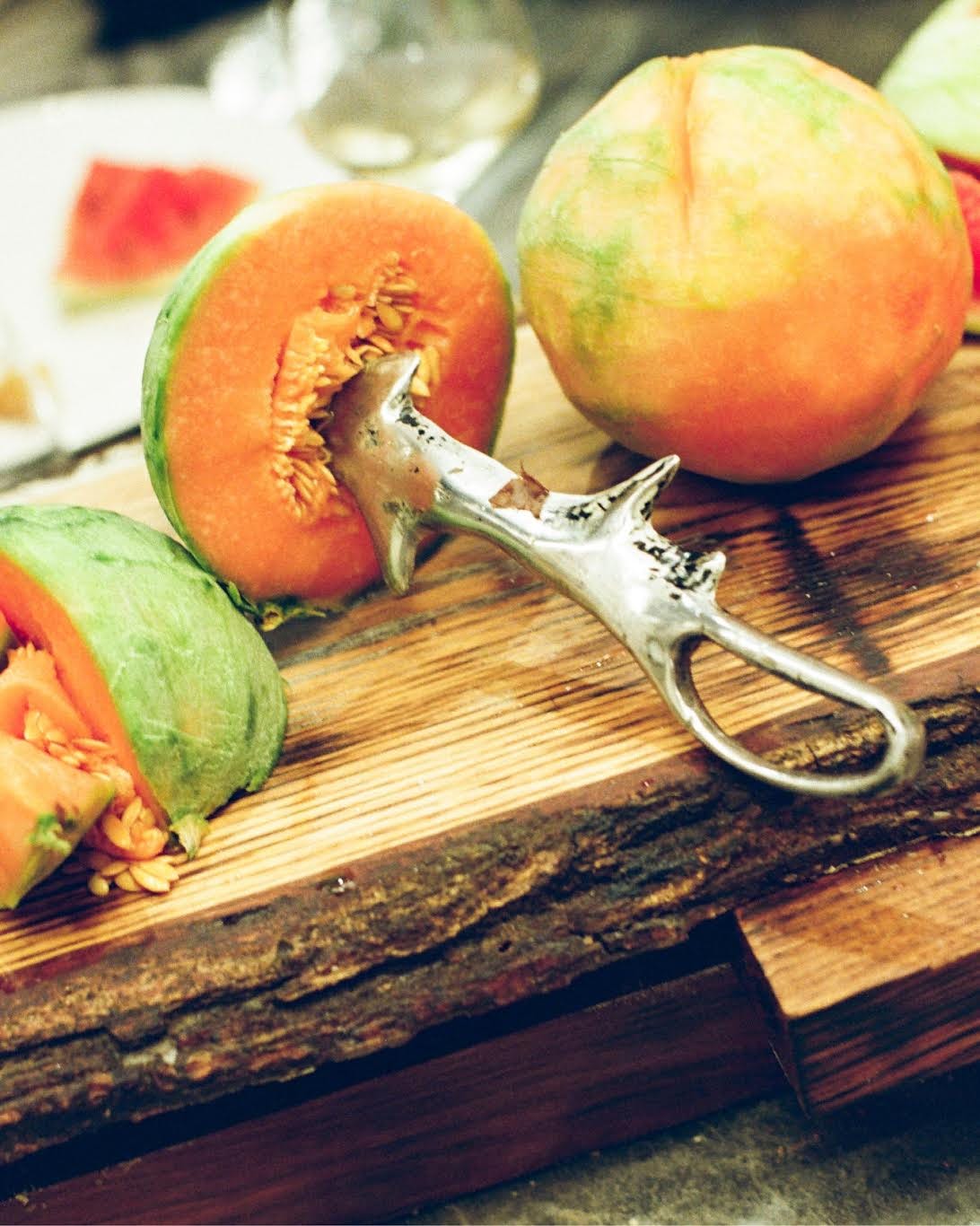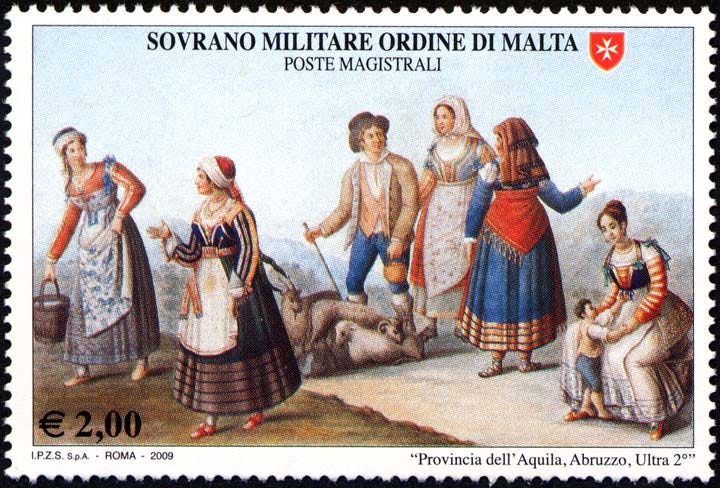#20 Cartolina Dispatch: Threads of Memory
Exploring Materiality, Community, and the Unseen at MAXXI L’Aquila with Lisa Andreani
Nestled in the heart of Italy, MAXXI L’Aquila stands as a beacon of cultural exploration, where history and innovation converge to celebrate memory and materiality. This multidisciplinary exhibition invites visitors to journey through intertwined narratives of tradition and contemporary practice, weaving together the textures of the every day and the unseen.
For this special edition of Cartolina, we turned to a cherished friend and collaborator of the magazine, Lisa Andreani, whose thoughtful contributions often mirror the themes explored in this remarkable exhibition. A curator and creative voice attuned to the nuances of community and heritage, Lisa’s insights vividly bring the exhibition’s spirit to life.

We’re also thrilled to share that Marco Schiavone's works, featured in this issue, are part of the MAXXI exhibition. Schiavone’s artistic vision captures the delicate interplay between ordinariness and reinvention, resonating deeply with the exhibition’s ethos.
Through this conversation, Lisa unveils the inspirations and connections that shape this groundbreaking project, offering a glimpse into the cultural dialogues fostered at MAXXI L’Aquila—an experience as rich and layered as the region itself.
How did the idea of exploring the theme of materiality and memory through a multidisciplinary exhibition come about?
The idea stemmed from the desire to do something different with the museum, which sees this exhibition as its first multidisciplinary project. I wanted to start with the city and its people, as well as the places I visited and encountered during the previous year, 2023, while working on the Panorama L’Aquila project. To achieve this, I envisioned creating something accessible to everyone—or better yet, "available," to use the words of Celati, which feature in the exhibition's subtitle. Materiality and memory allowed for the construction of a horizontal narrative, rooted in family histories but also touching on themes highly relevant to contemporary culture (not just art), such as the revival of rural practices, which today seem like radical choices.
How did Gianni Celati’s concept of the “everyday available” influence the exhibition’s narrative?
Celati’s notion of the every day available appears and disappears in the choice of exhibited materials—whether they’re wheat baskets or a film like False Stard by Yto Barrada. Although I deliberately chose not to exhibit any of Celati's work, his influence can be found in the exhibition's tone. It's as if each room represents a story, allowing visitors to act as narrators, shaping their own interpretations and intuitions.

What is the main message you hope to convey to visitors through the focus on the “unseen”?
I believe that revisiting the small details of daily life can invite people to experience a different sense of time—slower, of course—and community.
How did you select the artists and works to represent the connection between ordinariness and tradition?
I can’t deny that many of the materials, figures, artists, and works stem from years of research, which has consistently revolved around ideas of socially engaged art, public art, and accessibility.
Were there challenges in integrating the works from the MAXXI Collection with the artifacts and documents from the Museum of Civilizations?
Not at all. Artistic Director Andrea Viliani immediately resonated with the project and allowed me to collaborate with the museum’s staff. Gradually, they opened up to the theme, feeling more involved in the process. I visited the museum five or six times, searching for the right artifacts, photographs, or videos to include. These visits opened up new worlds; I discovered objects I wasn’t initially looking for, and exploring the museum’s storage rooms helped me understand the complexity of their collections.
What criteria guided the selection of the sound, photographic, and documentary productions on display?
Ramona Ponzini's new sound production results from an in-depth exploration of the territory and a dialogic collaboration with two local institutions: the University of L’Aquila and the Alfredo Casella Conservatory. The Department of Civil Engineering generously provided the artist and composer with tables describing a local soil identity map. Data was sonified and vocalized, and the corresponding graphic score was given to Conservatory students for a live performance during the opening day.
For the photographic and documentary materials, I aimed to cover a range of manifestations and local figures, combining images that border on fiction with documentary traces of exhibitions and projects sourced through publications and catalogs.
How was the dialogue between contemporary art, design, architecture, and historical documents conceived?
There wasn’t a strict design process. Instead, I used a metaphorical image as a "technique": the cat’s cradle game, where string and hands create various shapes. The exhibition is a play of leaps and constellations, with everything finding its place along the journey.
Which exhibition elements best highlight the connection between cultural traditions and contemporary artistic practices?
The first room of the exhibition strongly emphasizes a succession of temporal layers. Visitors encounter grain collection baskets, a bread sculpture by Ezio Gribaudo in the shape of a dinosaur, the Expo 61 catalog featuring an exploration of bread’s sculptural and cultural power, Claudia Durastanti’s Missitalia, and images of the Tuscan countryside with an enigmatic figure, Moira Ricci’s “stone man.” This is just the opening, but subsequent rooms follow a similar approach.
Do you think the use of diverse media (photography, sound, architecture) can deepen the understanding of the “unseen”?
Certainly, they evoke memories and encourage searching for traces in our stories and those presented in the exhibition.
How does the exhibition relate to the local territory and artistic community?
Beyond certain documentary elements within the exhibition and the display reflecting the local colors of saffron-rich meadows, the aviary room's connection with the territory is evident. This space is part of the exhibition route but also serves as a public program venue. I envisioned this room as an after-school or after-work space—a place to linger. The public program collaborates with the local creative community, especially schools. Additionally, to foster engagement, the exhibition grants free entry to local residents, encouraging them to view the show as a lab to visit repeatedly.
Were there direct collaborations with local artists or artisans?
Not at the moment, apart from partnerships with local institutions such as the Giorgio De Marchis Foundation and Enrico Sconci’s MUSPAC.
What were the most significant contributions from the Arts and Popular Traditions Collection?
The opportunity to delve into the work of Annabella Rossi, an anthropologist and the first female official at the Museum of Arts and Popular Traditions (now part of the Museum of Civilizations), was particularly meaningful. I was struck by her research in the Abruzzo region, including L’Aquila, and her relationship with local poet, artisan, and shepherd Francesco Giuliani.
Was the exhibition designed to follow a specific narrative or leave room for visitors' personal interpretations?
Absolutely the latter. I deliberately avoided filling the exhibition with text and captions. Instead, there is a dedicated booklet for those who wish to delve deeper, but I didn’t want an authoritative voice dictating explanations.
How did you balance historical documentation with artistic invention?
I aimed for moderation. The irony in some pairings is subtle; I wanted to elicit a knowing smile rather than outright laughter. These are sensitive, fragile materials imbued with memories.
Are there works or sections of the exhibition that best embody this fusion?
Moira Ricci’s Da buio a buio series from the MAXXI collection embodies this blend. Archival images, vintage frames purposefully chosen by the artist, and indistinct, dreamlike figures evoke a dual emotion. The imagery feels familiar, yet something is amiss.
How will the audience react to discovering these “new collective imaginaries”?
I hope they feel included, learning to see the museum as a cultural center where they belong—part of a dialogue that addresses cultural needs that may have been neglected in the past.
Are there additional activities, such as workshops or talks, planned to expand on the exhibition’s themes beyond Ramona’s performance?
Yes, we’re finalizing the public program, which will soon be shared through our channels.
Does this exhibition represent a model for similar projects in the future?
It certainly serves as a model for future approaches. I’m very interested in analyzing the museum as a community space rather than merely an exhibition venue. I believe the traditional exhibition model needs significant revitalization. Small-town museums like MAXXI L’Aquila have the potential to engage with more radical and dialogic languages.
Are there plans to bring this project to other cities or cultural institutions?
Not for now, but it’s an intriguing possibility to consider!
Name of Stamp: Antichi costumi e tradizioni Abruzzesi
Year: 2009
In this edition of Cartolina, we celebrate Abruzzo and Maxxi L’Aquila, with this stamp dedicated to local costumes and traditions.
Our magazines are available in select stockists worldwide and on our website. We want to hear from you! Reply to this email, leave comments below, or connect with us via our social media channels. If you send us a postcard, we'll hang it on our office walls.
Until the next dispatch,
Elisa, and the rest of the Sali e Tabacchi Journal team.






